Purdue University School of Aeronautics and Astronautics
The Purdue University School of Aeronautics and Astronautics is Purdue University's school of aerospace engineering contained within the Purdue University College of Engineering. The school offers BS, M.S., and PhD degrees in aeronautical and astronautical engineering and provides distance graduate education including online MS in Engineering with concentration in Aeronautics and Astronautics and a distance PhD.[2] Its main office and some of its labs are located in the Neil Armstrong Hall of Engineering. As of 2010, the School has awarded an estimated 6% of BS degrees and 7% of PhDs in aerospace engineering in the United States.[3]
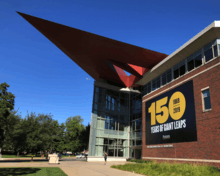 | |
| Established | 1945 |
|---|---|
| Head | William Crossley |
Academic staff | 38 |
Administrative staff | 32 |
| Undergraduates | 927 (Fall 2019)[1] |
| Postgraduates | 504 (Fall 2017) |
| Address | 701 W. Stadium Ave. , West Lafayette, IN 47907 West Lafayette , Indiana , United States |
| Affiliations | Purdue University |
| Website | |
History
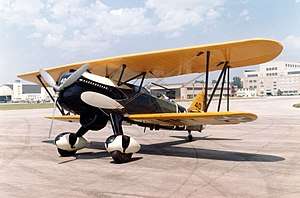
Aeronautical engineering education and research at Purdue dates back to early 1920s when the Aeronautical Engineering courses were offered as part of Senior Aeronautical Option in the mechanical engineering program. By 1930s the course offerings in aeronautical engineering expanded to eight with many courses taught at the Purdue Airport, the world's first university-owned airport that opened in 1934. The formal four-year curriculum in aeronautical engineering was developed by World War II and in 1942, Mechanical Engineering became the "School of Mechanical and Aeronautical Engineering." The school was officially established as a separate degree program on July 1, 1945.
Graduate education at the School began with a master's degree program in Aeronautical Engineering in 1946. Ph.D. program was approved for aerodynamics and propulsion in 1948, followed by the structures area in the early 1950s. Purdue's first Ph.D. in Aeronautical Engineering was awarded to R. L. Duncan in 1950 for his work with Professor Maurice Zucrow on the performance of gas turbines.[4]
The school's present name was adopted in 1973.[5]
Purdue students have built and restored several aircraft as part of the program. The sole Curtiss P-6 Hawk was restored by students and resides at the National Museum of the United States Air Force. In 1971 students restored a Ryan PT-22 Recruit, and completed a homebuilt Schreder HP-14 glider.[6]
Distinguished alumni
Purdue aerospace has had a long tradition of excellence. Many of its graduates have gone on to become astronauts or other prominent members of the aerospace and defense industry. Purdue University has graduated 24 astronauts, more than any other public institution, and 15 of those hold degrees from the aerospace department. The only non-military institution to graduate more astronauts is the Massachusetts Institute of Technology. One-third of all of NASA's manned space flights have had at least one Purdue graduate aboard, and two of the six American astronauts to fly on the Russian space station Mir held Purdue degrees.[5]
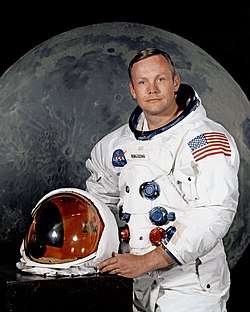
Astronauts with Purdue aerospace degrees
- Neil A. Armstrong, B.S. in Aeronautical Engineering, 1955
- John E. Blaha, M.S. in Astronautics, 1966
- Roy D. Bridges, Jr., M.S. in Astronautics, 1966
- Mark N. Brown, B.S. in Aeronautical and Astronautical Engineering, 1973
- John H. Casper, M.S. in Astronautics, 1967
- Roger B. Chaffee, B.S. in Aeronautical Engineering, 1957
- Richard O. Covey, M.S. in Aeronautics and Astronautics, 1969
- Guy S. Gardner, M.S. in Aeronautics and Astronautics, 1970
- Henry Charles Gordon, B.S. in Aeronautical and Astronautical Engineering, 1950
- Gregory J. Harbaugh, B.S. in Aeronautical and Astronautical Engineering, 1978
- Gary E. Payton, M.S. in Aeronautics and Astronautics, 1972
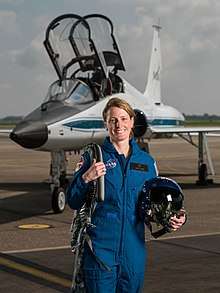
- Mark L. Polansky, B.S., M.S. in Aeronautical and Astronautical Engineering, 1978
- Loren J. Shriver, M.S. in Astronautics, 1968
- Charles D. Walker, B.S. in Aeronautical and Astronautical Engineering, 1971
- Beth Moses, B.S. and M.S. in Aeronautical and Astronautical Engineering, 1992 and 1994
Additionally,
- Loral O'Hara, M.S. in Aeronautical and Astronautical Engineering, 2009 is a NASA astronaut candidate of the class of 2017[7]
Notable aerospace engineers and inventors
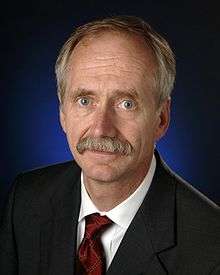
- Paul Bevilaqua, the principal inventor of lift fan engine for the Joint Strike Fighter F-35B
- Gene Porter Bridwell, seventh director of NASA Marshall Space Flight Center
- William H. Gerstenmaier, Associate Administrator for Space Operations for NASA
- John L. Hudson, Program Director for Joint Strike Fighter
- John H. McMasters
- Jordi Puig-Suari, co-inventor of CubeSat
- Daniel Raymer, a widely recognized expert in aircraft conceptual design
Notable business executives
- Mike Moses, President of Virgin Galactic[8]
Other notable alumni
- John H. Griffith, Bell X-1 test pilot
- Dennis Epple, American economist
Notable faculty
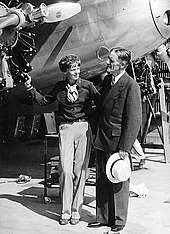
- Daniel Dumbacher, 2014-2017
- Amelia Earhart, 1935-1937
- Thomas N. Farris, 1986-2009
- Kathleen Howell
- Georgios Lianis, 1959-1978
- James Longuski
- R. Byron Pipes
- Shu Shien-Siu, 1968-1979
- David A. Spencer
- David Wolf
- Karl Dawson Wood, 1937-1944
- Henry T. Yang, 1969-1994
- Maurice Zucrow, 1946-1953
Student organizations
The School of Aeronautics & Astronautics is also home to 9 student organizations that engage its members in a wide array of social, outreach, engineering and service activities. They are:
AAE Graduate Women's Gathering
The student organization formed in 2011 brings together graduate women in a comfortable setting for mentoring experiences to meet and share information and strategies for achievement of personal, academic, and professional success.[9]
Aero Assist
Aero Assist is a student organization at Purdue University that caters to graduate students within the school of Aeronautics & Astronautics. A committee of 10 graduate students organizes several activities that are beneficial to graduate students such as the Research Symposium Series, the Graduate Mentor Program and recreational/leisure activities for the students.[10]
Aeronautical and Astronautical Engineering Student Advisory Council
AAESAC serves to facilitate interactions and the relationship between faculty and the student body, to advise the administration on issues and concerns of students pertaining to the department, and generally strives to improve the school in hopes of enhancing the educational experience.[11]
American Institute of Aeronautics & Astronautics
AIAA is the leading professional society for the field of aerospace engineering. The Purdue chapter works to support the institute's main objectives which is to advance the arts, sciences, and technologies pertaining to the aerospace field.[12]
Amateur Student and Teacher Rocketry Organization
A.S.T.R.O is not only focused on research of solid fuel rocketry, but interacting with the community as well.[13]
Purdue Space Day
Organized by university students, Purdue Space Day (PSD) is an annual educational outreach program, which provides school students in grades 3-8 the opportunity to learn about science, technology, engineering, and math (STEM) by participating in three age-appropriate activity sessions throughout the day.[14]
Sigma Gamma Tau
SGT is the American honor society for engineering students. It was founded at Purdue University on February 28, 1953. It seeks to identify and recognize achievement and excellence in the Aerospace field.[15]
Students for the Exploration and Development of Space
SEDS is a prominent student-run international grass-roots movement dedicated to space advocacy. Through 3 missions,[16] its chapter at Purdue University allows its members to broaden their technical skills in space-related projects, educate K-12 through outreach programs, and network among other space enthusiasts at conferences such as Space Vision, NewSpace, and ISDC. Every spring, Purdue SEDS hosts its flagship event known as the Spring Space Forum. The goal of the forum is to invite prominent members of industry, academia, and other space-related fields to discuss a current relevant issue. Previous speakers include Michael D. Griffin, former NASA administrator and John Gedmark, co-founder of the Commercial Spaceflight Federation and Purdue alumnus.[17]
Women in Aerospace
The purpose of Women in Aerospace is to provide undergraduate women in the aerospace engineering program educational, social, and professional opportunities. WIA seeks to raise awareness of the gender disparity in aerospace engineering and encourage to learn more about how to create inclusive environments.[18]
References
- https://engineering.purdue.edu/Engr/AboutUs/FactsFigures/EnrollmentAndDegrees/2017-enrollment. Missing or empty
|title=(help) - "AAE Distance Graduate Education".
- Grandt, Alten; Gustafson, W.A.; Carnigno, Laurence (2010). One small step : the history of aerospace engineering at Purdue University (2nd ed.). Purdue University, School of Aeronautics and Astronautics. p. XXI. ISBN 978-1-55753-599-3.
- Grandt, Alten; Gustafson, Winthrop (2003). HISTORY OF AEROSPACE EDUCATION AND RESEARCH AT PURDUE UNIVERSITY: 1910 - 2002. AIAA-2003-0234, 41st Aerospace Sciences Meeting & Exhibit, 6–9 January 2003, Reno, Nevada.
- http://engineering.purdue.edu/AAE/AboutUs/History History of the Purdue School of Aeronautics and Astronautics
- Air Progress: 14. December 1971. Missing or empty
|title=(help) - http://www.purdue.edu/space/astronauts.html Purdue grads in space
- "2018 Distinguished Engineering Alumni/Alumnae".
- https://boilerlink.purdue.edu/organization/aawgwg
- https://engineering.purdue.edu/AeroAssist/ Aero Assist
- https://engineering.purdue.edu/aaesac/ Purdue AAESAC
- "Archived copy". Archived from the original on June 7, 2015. Retrieved July 19, 2012.CS1 maint: archived copy as title (link) Purdue AIAA chapter
- http://www.getinvolved.purdue.edu/organization/astro/about
- https://engineering.purdue.edu/PurdueSpaceDay/about_psd/aboutspaceday.html Purdue Space Day
- "Archived copy". Archived from the original on December 11, 2012. Retrieved July 19, 2012.CS1 maint: archived copy as title (link) Purdue SGT
- https://engineering.purdue.edu/AAE/Academics/StudentOrgs/seds/about.html Purdue SEDS
- https://engineering.purdue.edu/AAE/Academics/StudentOrgs/seds/ssf.html Spring Space Forum
- https://boilerlink.purdue.edu/organization/WomenInAerospace
